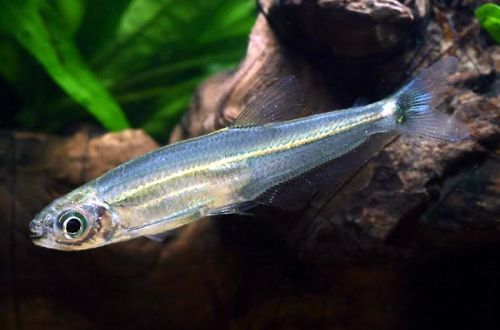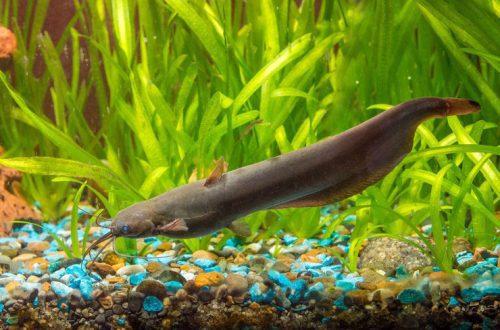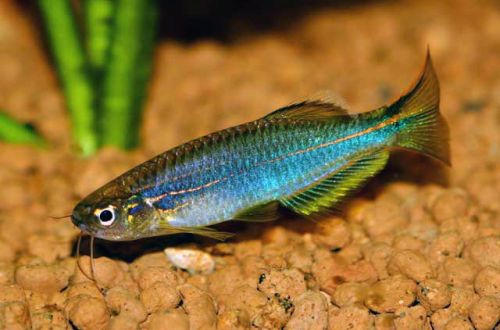
Greenstripe Tetra
The Greenstriped Tetra or Tetra Iguana, scientific name Iguanodectes spilurus, belongs to the Iguanodectidae family. It is considered easy to keep and does not require a lot of time and money from the aquarist, and compatibility with most other fish allows it to be placed in almost any freshwater aquarium of sufficient volume.

Contents
Habitat
Comes from South America. The natural habitat covers almost the entire Amazon River basin with its many tributaries. Inhabits small streams, channels and floodplain lakes flowing under the canopy of dense tropical forest.
Brief information:
- The volume of the aquarium – from 250 liters.
- Temperature – 20-28°C
- Value pH — 5.0–7.5
- Water hardness – 5–12 dGH
- Substrate type – any
- Lighting – subdued, moderate
- Brackish water – no
- Water movement – moderate
- The size of the fish is about 10 cm.
- Food – any food
- Temperament – peaceful
- Keeping in a group of 8-10 individuals
Description
Adult individuals reach a length of about 10 cm. Sexual dimorphism is weakly expressed, males and females are practically indistinguishable from each other outwardly. The fish has a slender, elongated body. The color is silvery, a green stripe stretches along the lateral stripe.
It belongs to the small genus Iguanodectidae, numbering no more than 10 described species. A characteristic feature of this genus of fish is the structure of the mouth with a protruding jaw, thanks to which they can scrape algae from the surface of stones and snags. A similar feature is reflected in the name of this species – the prefix “Iguana” just means an analogy with these reptiles that feed on sea plants growing on rocks.
Food
An omnivorous species, in a home aquarium it will accept most popular foods intended for aquarium fish. The daily diet may include dry, frozen, live foods. It is advisable to feed feed rich in plant components.
Maintenance and care, arrangement of the aquarium
The optimal size of an aquarium for a flock of 8-10 fish starts at 250 liters. Arrangement is arbitrary. The fish is not demanding on the choice of decor and can live even in a half-empty tank, where, in fact, they are often found in pet stores.
The vast range of habitat predetermined the ability of the Greenband Tetra to adapt to a fairly wide range of conditions in comparison with other Tetras. She prefers slightly acidic water of low or medium hardness. However, it should not be introduced into a biologically immature aquarium. It is important to maintain a stable aquatic environment and prevent the accumulation of organic waste.
Behavior and Compatibility
Peaceful mobile fish, perfectly compatible with other non-aggressive and non-predatory species of comparable size. Prefers to be in a flock of at least 8–10 individuals; with a smaller number, it can become overly shy.
Fish diseases
Diseases inherent in this particular species of fish were not noted. When kept in suitable conditions (high water quality, balanced diet, non-conflict neighbors, etc.), health problems are not observed. The most common cause of disease is the deterioration of conditions leading to immune suppression, which makes the fish susceptible to infections that are invariably present in the surrounding area. When the first signs of an illness are detected (lethargy, exhaustion, refusal of food, lowered fins, etc.), it is necessary to immediately check the main parameters of the water. Often, the restoration of acceptable living conditions contributes to self-healing, but if the fish is too weak or has received obvious damage, medical treatment will be required. For more information on symptoms and treatments, see the Aquarium Fish Diseases section.





